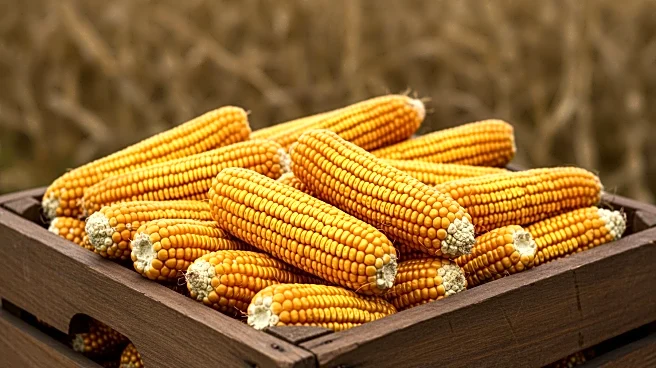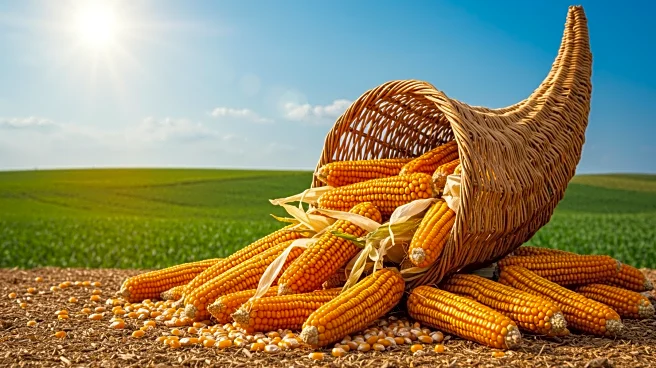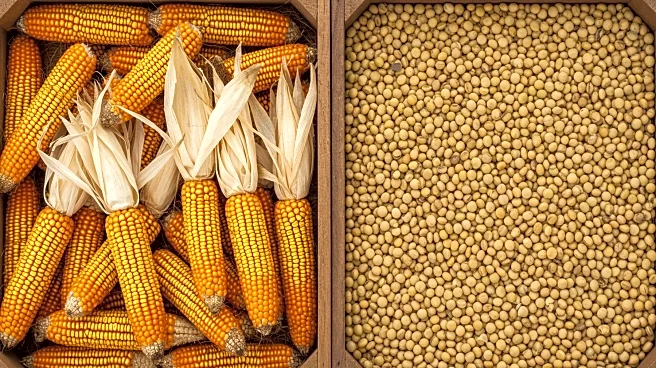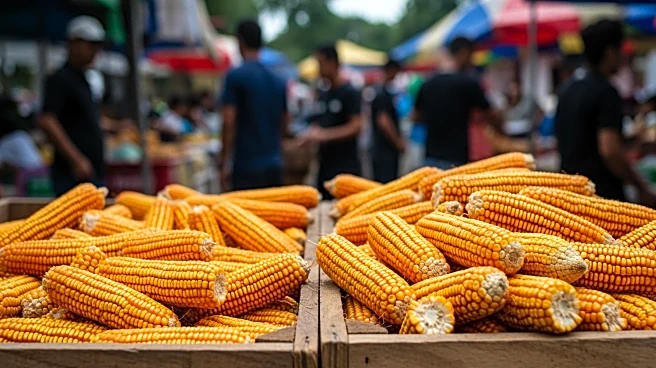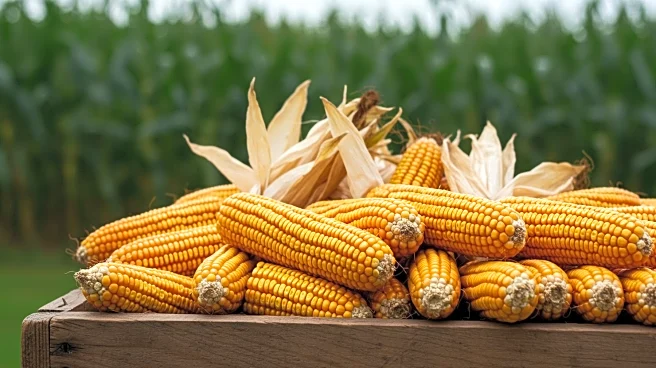What is the story about?
What's Happening?
The United States Department of Agriculture (USDA) has released new forecasts indicating record-high corn yields and production for the 2025/2026 marketing year. The USDA now expects a corn yield of 188.8 bushels per acre and a total production of 16.742 billion bushels, surpassing previous estimates. This increase in projected yield and production has led to concerns among corn growers about the impact on market prices. The National Corn Growers Association (NCGA) has expressed worries that the anticipated surplus will further depress corn prices, which are already low. The NCGA is urging Congress to pass legislation allowing year-round sales of E15 ethanol and for the Trump administration to expedite trade deals to open new markets for U.S. corn. Favorable weather conditions in the Corn Belt have contributed to the optimistic yield forecasts, with 72% of U.S. corn rated in good or excellent condition.
Why It's Important?
The USDA's forecast of record corn yields and production has significant implications for the U.S. agricultural sector. While high yields can be beneficial for meeting domestic and international demand, they can also lead to oversupply, which may drive down prices and impact farmers' profitability. The NCGA's call for legislative and trade measures highlights the need for policy interventions to support corn growers facing financial challenges. The potential for lower corn prices could affect the broader agricultural economy, influencing decisions on planting and investment. Additionally, the emphasis on ethanol production and trade deals underscores the interconnectedness of agricultural policy, energy markets, and international trade.
What's Next?
As the harvest season approaches, stakeholders will closely monitor actual yield data to assess the accuracy of the USDA's forecasts. The NCGA and other agricultural groups are likely to continue advocating for policy changes to support corn growers. The outcome of legislative efforts regarding E15 ethanol sales and trade negotiations will be critical in shaping the market dynamics for U.S. corn. Additionally, weather conditions in the Corn Belt will remain a key factor influencing crop quality and yield outcomes.
AI Generated Content
Do you find this article useful?
